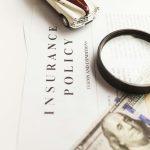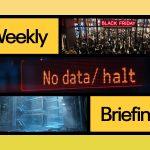Tariffs, globally defined: tariffs are taxes on imported goods that governments collect when products cross a border. They raise the landed cost of imports; how much of that cost reaches shoppers depends on competition, supply chains, and pricing decisions. In the U.S. today, renewed tariff actions are pushing some prices higher and complicating the path to lower interest rates.
TL;DR
-
New and expanded U.S. tariffs are lifting import costs on categories like lumber and furniture; these measures took effect Oct. 14, 2025. That puts upward pressure on some retail prices.
-
Major forecasters estimate tariffs have added meaningful—though not uniform—pressure to inflation in 2025. Recent reporting cites Fed leadership and analysis that tariff effects are in the ~0.3–0.4 percentage-point range on core inflation; CBO guidance has pointed to ~0.4 pp over the coming year.
-
When inflation runs hotter, rate cuts slow. As of September 2025, the FOMC set the federal funds rate at 4.00%–4.25%—still relatively high, keeping mortgages, auto loans, and credit-card APRs elevated.
-
Don’t try to “pick winners” from tariff headlines. Keep a diversified, ETF-based plan and automate contributions; protect cash flow by avoiding high-APR balances and comparing total cost (price + interest) on big purchases. (Finhabits & Emma can help you systematize both.)
What’s new: where U.S. tariffs are showing up now
In mid-October 2025, the U.S. implemented additional import duties including 10% on softwood lumber and 25% on kitchen cabinets and upholstered wooden furniture under trade actions announced by the administration. These categories feed directly into home projects and big-ticket purchases, so households may notice fewer deep discounts and stickier prices in these aisles.
From border taxes to your receipt (and your rate)
-
Landed costs rise: a tariff inflates the importer’s cost base.
-
Some share reaches prices: empirical work and business surveys indicate a significant share is passed through to retail prices over time, though it varies by product and competition. Fed Chair Jerome Powell recently noted tariffs may account for roughly 30–40 bps of the latest core inflation reading, and other central-bank analysis has flagged non-trivial pass-through.
-
Rates stay higher for longer: with inflation sticky, the Fed has been cautious in cutting. The policy rate stood at 4.00%–4.25% after the September meeting, a level that keeps mortgage, auto, and credit-card borrowing costs relatively elevated.
Bottom line: tariffs are not a U.S.-only concept—but in today’s U.S. setting, they’re one reason some goods cost more and why cheaper financing may take longer to arrive.
Where you’ll feel it first
-
Home & renovation: lumber and cabinet/furniture tariffs can lift remodel budgets and large-item purchases.
-
Durables & electronics: when tariffed components sit inside finished goods, retail prices can edge up even during promo seasons; Fed analysis this fall has highlighted firmer durable-goods readings alongside the tariff timeline.
Your investor playbook (that works even when headlines don’t)
Don’t “trade the tariff tape.” Company-by-company outcomes hinge on fast-changing supply chains and pricing power; policy can shift overnight. A broad, ETF-based core reduces single-name or single-sector risk.
Automate contributions in your Finhabits account so you keep buying through volatility (you average in instead of trying to time entries).
Use Emma to watch category drift (groceries, home, gas) and set bill-due reminders so cash-flow hiccups don’t create interest charges.
How financing can multiply tariff costs
Illustration (not advice): Suppose a $1,200 item now reflects a 5% tariff pass-through → new sticker $1,260.
-
Pay cash or a true 0% promo (and auto-pay the full balance within the promo window): $1,260 total.
-
Put it on a 24% APR card and revolve for 12 months: ~$160 in interest on top of the $60 tariff-driven increase → ~$1,420 all-in.
Same product, very different outcomes—because financing costs compound headline shocks.
Quick checklist to protect your budget
-
Compare total cost (price + interest), not just monthly payments.
-
Kill high-APR balances first; avoid new revolving balances on non-essentials.
-
Set a 90-day “cooling off” list for big buys; pounce only on real promotions.
-
Maintain a 3–6 month emergency fund so you’re not forced into high-cost credit.
-
Keep investing automated and diversified so policy cycles don’t derail your plan.
-
Use Emma to set category alerts and on-time payment nudges.
FAQs
What are tariffs, exactly?
They’re taxes on imported goods at a border. Globally, governments use them to shape trade. In today’s U.S. context, recent moves on categories like lumber and furniture have lifted some import costs and, in part, retail prices.
Are tariffs always inflationary?
Not always; pass-through varies by product and competition. But 2025 commentary from Fed leadership and related analysis points to a noticeable (roughly 0.3–0.4 percentage-point) boost to core inflation readings this year. The CBO has similarly discussed an effect of about 0.4 pp over the next year.
How do tariffs connect to my loan rate?
If tariffs add to inflation, the Fed may keep rates higher for longer. After the Sept. 2025 meeting, the policy rate stood at 4.00%–4.25%, which filters into consumer borrowing costs.
Where do I see U.S. policy details?
For official actions and product lists, see USTR’s Section 301 materials and related notices. News outlets like the Financial Times and Reuters have covered the October implementations and affected categories.
Glossary
Tariff – A border tax on imports; raises landed costs and can lift retail prices depending on pass-through.
Pass-through – The share of higher import costs that retailers/consumers ultimately pay.
Section 301 – A U.S. trade law tool used to address unfair practices; the legal basis for long-running China-origin actions.
USTR – The U.S. office that leads trade policy, including Section 301 actions.
CBP – U.S. Customs and Border Protection; administers customs processes and collects duties.
ETF diversification – Using low-cost exchange-traded funds to spread exposure across many companies/sectors/regions.
Turn tariff noise into steady progress
Headlines create anxiety; habits create results. While tariffs are lifting costs in certain categories and slowing the path to lower rates, your plan doesn’t have to stall.
-
Invest with a diversified, ETF-based core and automate contributions in Finhabits.
-
Keep day-to-day spending aligned with your goals using Emma alerts and reminders.
Small, repeatable actions beat headline-chasing—every time.
Disclaimer: This content is for educational purposes only and does not constitute personalized investment, legal, or tax advice. For guidance about your specific situation, consult a qualified professional.
Sources for key claims: Financial Times (new U.S. tariffs and effective date), Reuters (tariff pass-through & Powell’s inflation remarks), CBO via AP (inflation impact estimate), Federal Reserve (Sept. 2025 policy rate), USTR (Section 301 policy context).




